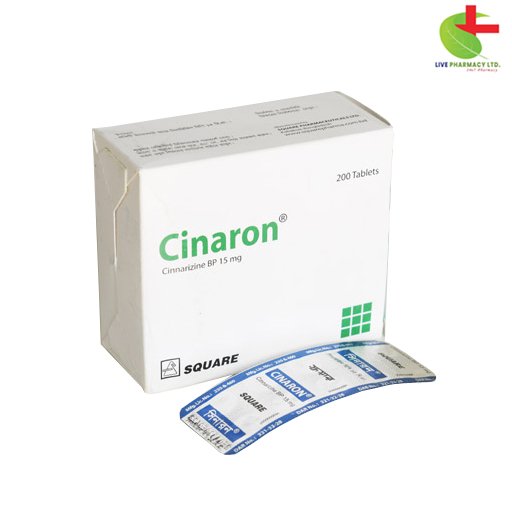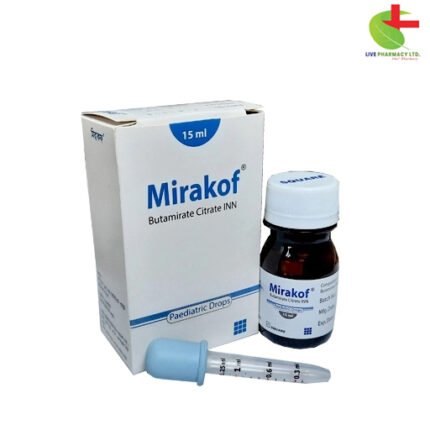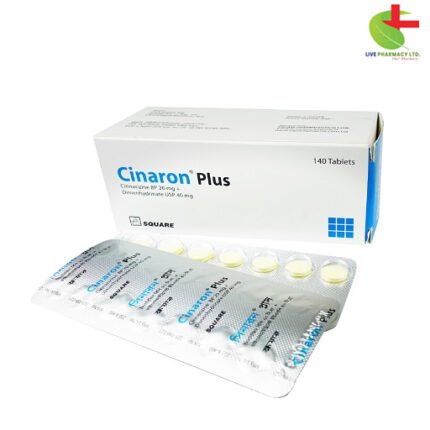Cinaron 15
13.50৳ Strip
- Versatile Medication: Cinnaron is a multipurpose drug addressing symptoms of nausea, vertigo, and motion sickness.
- Vascular Disorder Management: Effective in treating various vascular disorders, including cerebral and peripheral circulatory issues.
- Symptom Relief: Alleviates symptoms such as dizziness, headaches, and trophic disturbances associated with circulatory disorders.
- Improved Blood Flow: With its calcium antagonist properties, Cinaron enhances blood flow, offering relief for balance disorders and peripheral arterial diseases.
 Brand
Brand
|
Square Pharmaceuticals PLC |
|---|---|
 Generics
Generics
|
Cinnarizine |
Indications
Cinnaron is primarily used for the symptomatic treatment of nausea and vertigo due to Meniere’s disease and other labyrinthine disturbances. It also aids in the prevention and treatment of motion sickness and various vascular disorders.
Cerebral Circulatory Disorders
For the prophylaxis and maintenance therapy of symptoms related to cerebral vascular spasms and arteriosclerosis, including dizziness, tinnitus, vascular headache, irritability, fatigue, sleep disturbances, involutional depressions, memory loss, concentration issues, and aging-related disorders. It’s also beneficial for sequelae of cerebral and cranial trauma, post-apoplectic conditions, migraines, and peripheral circulatory issues.
Peripheral Circulatory Disorders
Prophylactic and maintenance therapy for symptoms associated with vascular spasms and arteriosclerosis such as intermittent claudication, trophic disturbances, ulcers, paraesthesia, cramps, and cold extremities, among others.
Balance Disorders
Effective in managing symptoms related to labyrinthine arteriosclerosis, vestibular irritability, and Meniere’s syndrome including vertigo, dizziness, nausea, and motion sickness prevention.
Description
Cinnaron’s efficacy in treating peripheral vascular diseases stems from its anti-vasoconstrictor properties, action on blood hyperviscosity, and anti-ischemic effects. It acts as a calcium antagonist, inhibiting calcium influx into smooth muscles, thereby improving vestibular symptoms and preventing peripheral arterial diseases.
Pharmacology
Cinnarizine functions as an antihistamine, labyrinthine sedative, and peripheral antivasoconstrictor. It selectively blocks calcium influx into smooth muscles, preventing their contraction and improving vestibular symptoms and peripheral arterial diseases.
Dosage & Administration
The recommended adult dosage is 15 to 30 mg thrice daily, with adjustments for children and specific conditions like motion sickness and peripheral arterial diseases.
Interaction
No significant drug interactions have been observed when Cinaron is used concomitantly with antihypertensives, diuretics, anticoagulants, or hypoglycemics.
Contraindications
While there are no specific contraindications, cautious use is advised in hypotensive patients due to its potential to lower blood pressure.
Side Effects
Rare side effects include somnolence, gastrointestinal disturbances, allergic skin reactions, and fatigue. Elderly individuals may rarely experience extrapyramidal symptoms during prolonged therapy, necessitating dosage adjustments or discontinuation.
Pregnancy & Lactation
Cinnarizine’s safety during pregnancy hasn’t been established, so it’s not recommended for use during pregnancy or lactation.
Precautions & Warnings
Patients should be cautious regarding drowsiness and avoid driving or operating machinery. Consumption of alcohol should be avoided.
Therapeutic Class
Categorized as anti-vertigo drugs.
Storage Conditions
Store below 30°C, away from light and moisture, and keep out of children’s reach.













Reviews
There are no reviews yet.